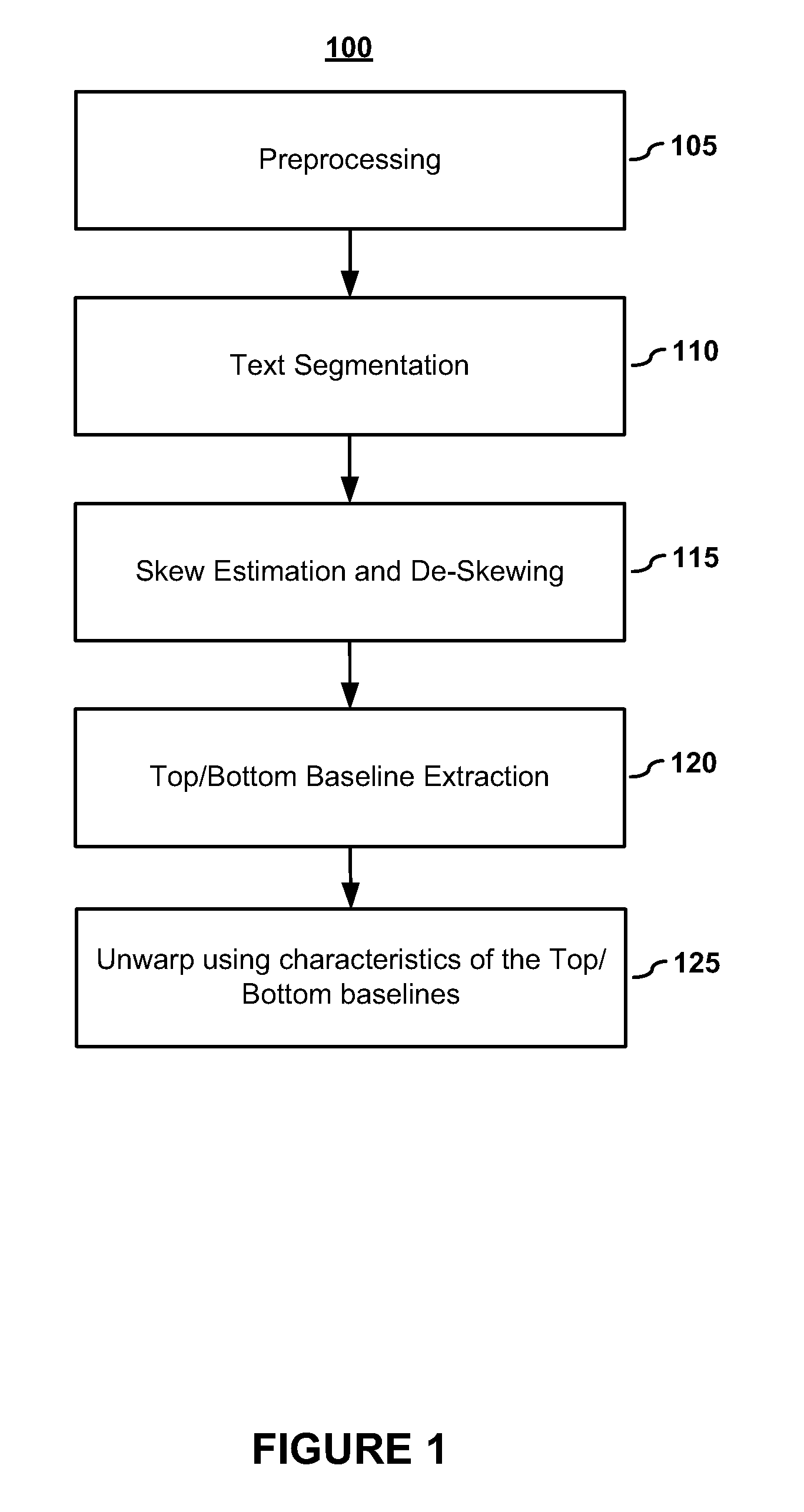Distortion correction of a captured image
a technology of distortion correction and captured images, applied in the field of image processing, can solve the problems of affecting the quality of captured images, and the ability to place the entire page of bound volume against the scanning surface, so as to achieve the effect of removing or reducing the distortion in scanned images and rapid distortion improvemen
- Summary
- Abstract
- Description
- Claims
- Application Information
AI Technical Summary
Benefits of technology
Problems solved by technology
Method used
Image
Examples
Embodiment Construction
[0040]Disclosed are systems and methods for unwarping an input image using boundary information extracted from the scanned image. In embodiments, two dominant baselines may be extracted from the scanned image and used to reduce or remove distortion of the image. In embodiments, two dominant baselines may be selected, in part, by examining the letter spatial locations on boundary baselines rather than examining the entire document layout. It shall be noted that present invention is robust enough to handle many types of content, including different languages such as, for example, English and Japanese, as well as documents with different layouts. The present invention may also be applied to images obtained from bound documents and flat documents.
[0041]In the following description, for purpose of explanation, specific details are set forth in order to provide an understanding of the invention. It will be apparent, however, to one skilled in the art that the invention may be practiced wi...
PUM
 Login to View More
Login to View More Abstract
Description
Claims
Application Information
 Login to View More
Login to View More - R&D
- Intellectual Property
- Life Sciences
- Materials
- Tech Scout
- Unparalleled Data Quality
- Higher Quality Content
- 60% Fewer Hallucinations
Browse by: Latest US Patents, China's latest patents, Technical Efficacy Thesaurus, Application Domain, Technology Topic, Popular Technical Reports.
© 2025 PatSnap. All rights reserved.Legal|Privacy policy|Modern Slavery Act Transparency Statement|Sitemap|About US| Contact US: help@patsnap.com



